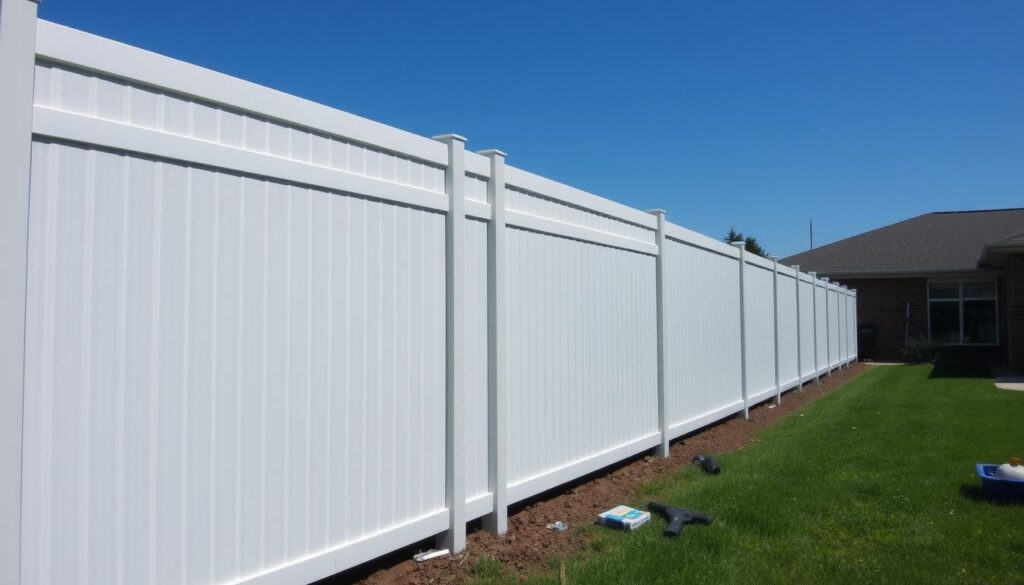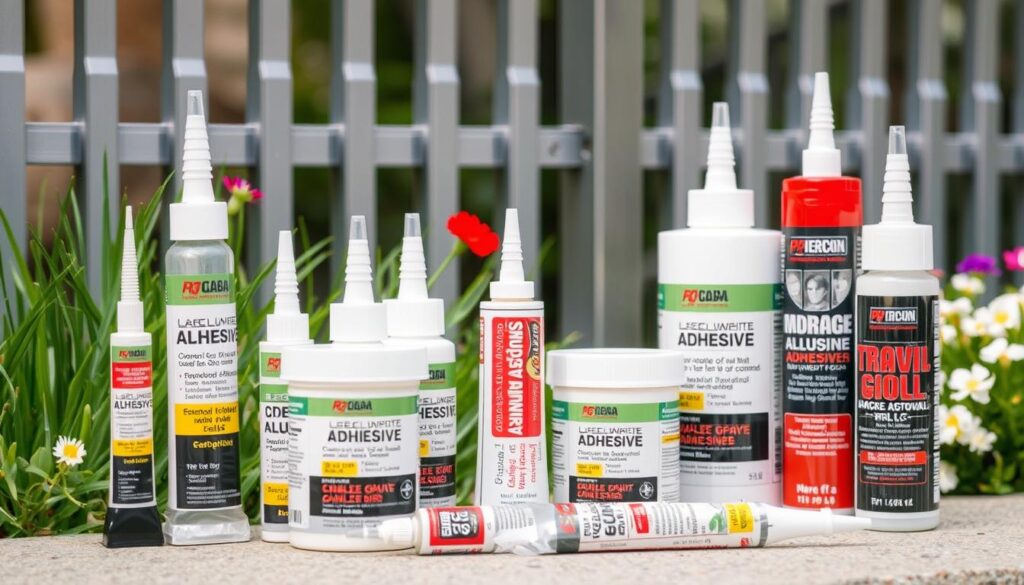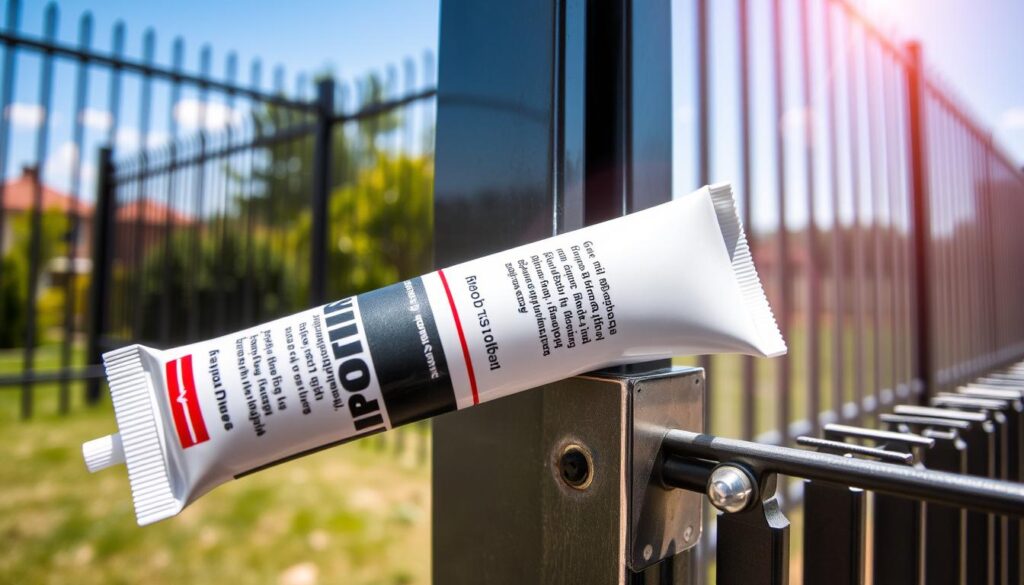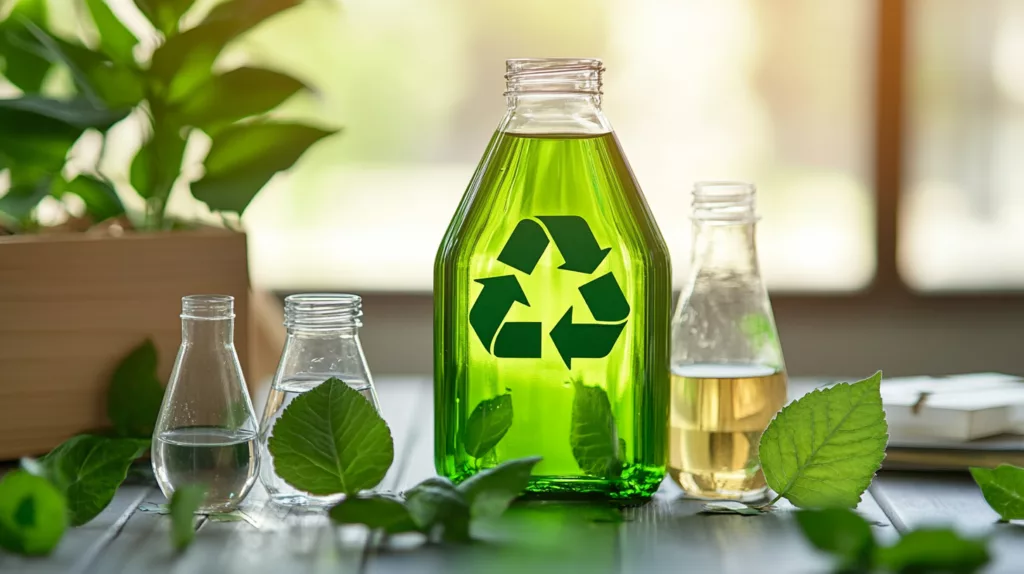Choosing the Best Glue for Aluminum Fencing is key. The strength and durability of your fence depend on the glue. Whether you’re a DIY fan or a pro, picking the best glue is crucial.
This guide will look at top adhesives for aluminum. They are known for strong bonding and lasting durability. They’re perfect for both small projects and big metalwork jobs. The right adhesive ensures your aluminum bond is strong, ready for any weather.
Key Takeaways
- Durability and strength are critical features in adhesives for aluminum fencing.
- Robust aluminum bonding ensures the longevity of your fencing project.
- A variety of top adhesive products are available, catering to both DIY and professional needs.
- Choosing the right glue can enhance the durability of your aluminum fence.
- Effective aluminum fence repair requires high-quality, specially crafted adhesives.
Introduction
Choosing the right adhesive for aluminum fence installation is crucial. Aluminum’s smooth surface and need for strong bonds make it challenging. This article will explore the best adhesives for aluminum, ensuring your fence lasts long and looks great.
We’ll look at various adhesives for aluminum fencing. You’ll learn how to apply them for the best results and understand safety tips. We’ll also share examples of how top adhesives improve aluminum fencing projects.

Types of Adhesives for Aluminum Fencing
Choosing the right adhesive for aluminum fencing is key for durability and strength. There are different adhesives for various needs. The main ones for aluminum fencing are epoxy adhesives, polyurethane glues, and silicone-based adhesives.

Epoxy Adhesives: Epoxy adhesives are very strong and rigid. They are great for bonding metals. They also resist weather and can handle heavy loads, perfect for outdoor fences.
Polyurethane Glues: Polyurethane glues bond well and are flexible. This flexibility helps them handle impacts and vibrations. They also resist moisture, making them good for outdoor use.
Silicone-Based Adhesives: Silicone adhesives are not as strong but are flexible and weather-resistant. They are best for places where parts need to move a bit, like with thermal changes.
| Adhesive Type | Strength | Flexibility | Weather Resistance | Best Use |
|---|---|---|---|---|
| Epoxy Adhesives | High | Low | High | Metal bonding, heavy-duty applications |
| Polyurethane Glues | Moderate to High | Moderate | High | Outdoor applications, impact resistance |
| Silicone-Based Adhesives | Moderate | High | Very High | Flexible joints, thermal expansion |
| ZDS™ Adhesives | Moderate | High | Very High | Metal bonding, thermal expansion |
Deciding between epoxy adhesives, polyurethane glues, and silicone-based adhesives depends on your project’s needs. Knowing what each can do helps you pick the best for your aluminum fencing.
Top Adhesive Products for Aluminum Fencing
Choosing the right adhesive for your aluminum fencing is key. There are many top products that bond aluminum well. They offer durability and strength. Here, we list and analyze the best adhesives.
JB Weld MarineWeld is a top pick. It’s known as a strongest marine aluminum to aluminum adhesive. It bonds well and lasts in harsh weather, perfect for outdoor fencing.
Loctite Epoxy Weld is another great option. It’s easy to use and bonds strongly. It dries fast, making it great for quick fixes.
Permatex Aluminum Epoxy is also top-notch. It has high tensile strength, making it ideal for aluminum to aluminum bonds. It’s also resistant to moisture and chemicals.
Here’s a comparison of these products:
| Product Name | Strength | Curing Time | Key Features |
|---|---|---|---|
| JB Weld MarineWeld | High | 4-6 hours | Weather resistant, waterproof |
| Loctite Epoxy Weld | Medium-High | 1 hour | Quick curing, easy application |
| Permatex Aluminum Epoxy | Very High | 4 hours | High tensile strength, chemical resistance |
| ZDS™ Aluminum Epoxy | Very High | 3 hours | High tensile strength, chemical resistance |
Each adhesive has its own strengths for aluminum fencing projects. You can pick the best based on your needs. From the strongest marine adhesive to versatile epoxies, these products ensure your fences last long.
Choosing the Right Glue for Aluminum Fencing
Ensuring your aluminum fencing lasts long requires the right adhesives. It’s important to consider many factors like surface prep, weather, and how much weight it can hold. Here’s a guide to help you pick the best adhesive for aluminium fencing.
First, prepare the aluminum surface well for gluing aluminum. Clean off any dirt, grease, or oxide layer. Then, use sandpaper to roughen the surface. This helps the adhesive stick better.
Think about the weather too. Aluminum fencing faces rain, heat, and cold. Pick an adhesive that stands up to weather and UV rays. This keeps the bond strong through all kinds of weather.
Also, consider how much weight the aluminum to aluminum adhesive can handle. Not all adhesives are good for heavy loads. Check the manufacturer’s info to see if it’s right for your project.
Here’s a table comparing popular adhesives for aluminum fencing. It shows their features and what they’re good for:
| Adhesive Brand | Type | Weather Resistance | Load-Bearing Capacity |
|---|---|---|---|
| Loctite Epoxy Weld | Epoxy | High | High |
| J-B Weld Steel Reinforced | Epoxy | High | Medium |
| 3M Marine Adhesive Sealant 5200 | Polyurethane | Very High | High |
| Gorilla Heavy Duty Construction Adhesive | Silane | Medium | Medium |
Now, picking adhesives for aluminum fencing is easier. Just remember to think about surface prep, weather, and load-bearing. This way, you’ll get a strong and lasting fence.
Application Tips for Aluminum Adhesives
Bonding aluminum needs careful attention and the right methods. Whether you’re working on fencing or other aluminum parts, these techniques are key. They help make sure your bond is strong and lasts.
Surface Preparation: Clean the aluminum well to get rid of dirt, oils, and oxides. Use isopropyl alcohol or a similar cleaner for the best results. Good surface prep makes your glue work better.
Application Temperature: Use adhesives when it’s between 60°F and 85°F. Temperatures outside this range can mess up the bond.
Curing Times: Stick to the curing times given by the manufacturer. Most adhesives need you to clamp the parts for a while. Wait until the adhesive is fully set before moving the parts.
Achieving a Strong Bond: Use special tips for bonding aluminum. For example:
- Mechanical Finishing: Lightly roughen the surfaces with abrasive pads to help the adhesive stick better.
- Proper Dispensing: Use the right tools to spread the adhesive evenly.
- Pressure Application: Press down evenly on the bonding area while it cures.
Here’s a table with important steps for applying adhesives to aluminum fencing:
| Stage | Action | Tools Required |
|---|---|---|
| Surface Preparation | Clean and abrade surfaces | Isopropyl alcohol, abrasive pads |
| Application Temperature | Maintain recommended temperature | Thermometer |
| Curing Time | Allow proper curing as per instructions | Clamps |
| Final Bonding | Ensure full curing and apply pressure | Press tools, weights |
Safety and Environmental Considerations
Working with adhesives for aluminum fencing requires understanding adhesive safety. Many adhesives have chemicals that can be dangerous if not used right. Always read and follow the safety instructions from the maker to apply safely and avoid health risks.
New advancements have brought safer, easier-to-use user-friendly adhesive products to the market. These products have fewer harmful chemicals, making them good for both pros and DIYers. Wearing gloves and goggles can also help keep you safe.
It’s also important to think about the environmental impact of glues. Old adhesives can pollute the air and water with harmful chemicals. Choosing eco-friendly adhesives can help lessen these problems. Look for products that are low in VOCs or can break down naturally.
Companies like 3M and Gorilla Glue are making strides in green adhesives. Their user-friendly adhesive products work well but are kinder to the planet. Using these products helps keep you safe and helps protect the environment for the future.
Case Studies and Real-World Applications
Learning about adhesive use in real projects can help you with aluminum fencing. We’ll look at some case studies. They show how adhesives work well and last long.
In Chicago, a park was renovated with an aluminum fence. The engineers used a strong epoxy adhesive. This made the fence very durable, even in bad weather.
In Miami, a home needed an aluminum fence fast. A quick-drying polyurethane adhesive was used. It made the fence strong and beautiful, showing the adhesive’s success.
These examples show how adhesives perform in different places. They prove that the right glue makes an aluminum fence last. Whether it’s weather or looks, the right glue matters.
| Project Location | Adhesive Used | Outcome |
|---|---|---|
| Chicago Municipal Park | High-Strength Epoxy | Excellent Durability |
| Miami Residential Home | Polyurethane Adhesive | Rapid Installation |
Conclusion
Choosing the right glue for aluminum fencing is key to its durability and strength. With many options, it’s crucial to pick the best one for your needs. This includes factors like weather resistance, strength, and how easy it is to apply.
In this guide, we explored different adhesives, how to use them, and top picks. Good bonding is essential for keeping your fence looking and feeling great. It helps maintain the fence’s structure and beauty.
Here’s a quick comparison of some common adhesives to help you decide:
| Adhesive Type | Strength | Weather Resistance | Application Ease |
|---|---|---|---|
| Epoxy | High | Excellent | Moderate |
| Acrylic | Medium | Good | Easy |
| Polyurethane | Very High | Outstanding | Challenging |
| Silicone Adhesive | Medium | Excellent | Easy |
To keep your aluminum fence in top shape, choose the right adhesive. Use the tips from this guide to make a choice that will strengthen and enhance your fence for years.
Further Resources
If you want to learn more about aluminum adhesives and fencing, there are many resources available. You can find books, technical guides, online forums, and professional associations. These help you learn and get better at metalwork and bonding.
Begin with books like “Adhesives Technology Handbook” by Sina Ebnesajjad. It offers deep insights into various adhesives, including those for aluminum. For specific research, check out the “Journal of Adhesion Science and Technology.” It has articles on the latest in bonding processes and materials.
Online, Reddit’s DIY section and the Metal Work forum on Stack Exchange are great places to find tips. They have discussions and advice on aluminum fencing. Also, the Adhesive and Sealant Council (ASC) and the American Welding Society (AWS) are great for industry standards and networking.
Exploring these resources will help you learn both theory and practice. You’ll be able to tackle aluminum fencing projects with confidence. Whether you’re new or experienced, these resources have something for everyone.
FAQ
What kind of glue will stick to aluminum?
Several glues work well on aluminum. Epoxy, polyurethane, and silicone-based adhesives are good options. Each has unique properties for different uses.
What is the strongest glue for aluminum?
Epoxy adhesives are the strongest for aluminum. They have great tensile strength and last long. This makes them perfect for tough jobs like fencing and construction.
What type of bonding is used for aluminum?
Aluminum can be bonded with glue or mechanical fasteners. Glue creates strong, lasting bonds. Mechanical fasteners use screws and bolts to join parts.
What is the best adhesive for aluminum to wood?
Polyurethane and epoxy glues are top choices for bonding aluminum to wood. They stick well and handle the different ways materials expand and contract.
How do you glue aluminum to aluminum?
Clean and sand the aluminum surfaces first. Then, apply epoxy or polyurethane glue. Clamp the pieces together until the glue sets.
Can aluminum be glued to wood?
Yes, you can glue aluminum to wood. Use polyurethane or epoxy glues for strong bonds. They work well with aluminum and wood’s different properties.
Do magnets stick to aluminum?
No, magnets don’t stick to aluminum. Aluminum isn’t magnetic, even though it can be magnetized under certain conditions.
What is the strongest marine aluminum to aluminum adhesive?
For marine aluminum bonding, use a two-part marine epoxy. J-B Weld is a top choice for its durability in harsh marine environments.
Can you use Mod Podge on aluminum foil?
Yes, Mod Podge works on aluminum foil for decoupage. It’s a glue, sealer, and finish, great for crafting.
What is the best glue for aluminum fencing?
Epoxy adhesive is best for aluminum fencing. It’s strong and durable, lasting through outdoor conditions for long-lasting bonds.











